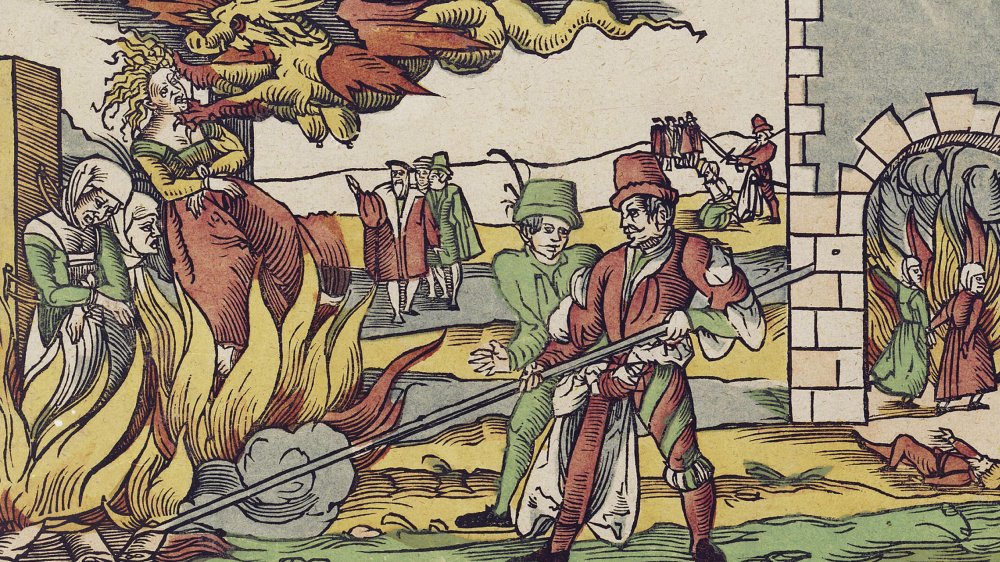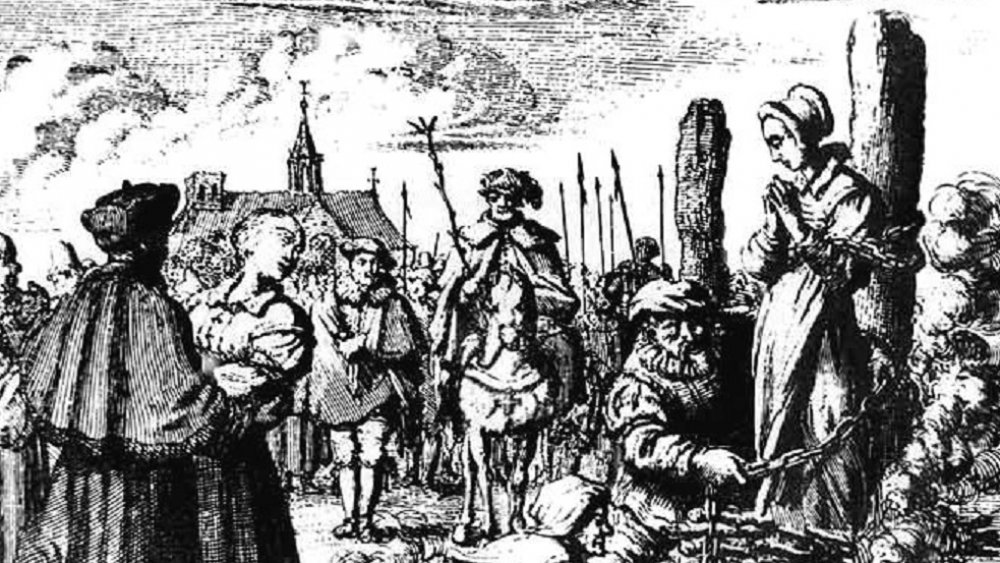What Life Was Really Like As A Witch-Hunter
The word "witch-hunter" might conjure images of anything from Van Helsing to Death Eaters. There might be some dual-wielding sword-and-sorcery combat, demon summoning, incantations, spell-flinging, or something else that belongs in either an RPG or a Netflix series. However, believe it or not, there were people who prowled the globe as honest-to-goodness "witch-hunters," as a profession, particularly in Europe, and particularly in the late 16th to early 17th centuries (via TheCollector). And yes, burning at the stake was a common method of execution.
It shouldn't be any surprise that this type of brutality invariably stemmed from crazed, religious fanatics (or profit-driven mercenaries) who took to the streets to stamp out dancing, medical seizures, frog-owning, and the like, as signs of demonic entanglement. It also shouldn't be a surprise that these individuals were essentially mass murderers who used torture to extract dubious confessions often renounced after the fact. And of course, it shouldn't be a surprise that the relationship between these witch-hunters and the existence of any modern, fictionalized, exotic notion of basement-level Satanic rituals is complete nonsense.
Double, double, toil and trouble
Historical witch-hunters often came from religious circles, as members of either the Catholic or Protestant clergy, while others came from secular realms as lawyers, theologians, or magistrates. They often had shocking latitude to carry out their investigations using spurious means, or whatever makeshift logic suited them.
One of the most notorious of these individuals is Matthew Hopkins, an ex-lawyer born in the 1620's who popularized the "if it floats, it must be a witch" story parodied in Monty Python and the Holy Grail. English law was stricter than other nations, as described in Listverse, and so Hopkins was restricted to mere sleep deprivation to attain confessions. Others were far more vicious, such as Sebastian Michaelis, Grand Inquisitor of the French Inquisition, who wrote The Admirable History of Possession and Conversion of a Penitent Woman in 1612 and sent 18 people to their death. Around the same time, judge Pierre de Lancre executed 80 people in about 4 months in the region of Labourd, France. Magistrate Nicholas Remy advocated eliminating entire family bloodlines in his 1595 book Demonolatry, and was responsible for at least 128 deaths.
In the end, some of these men were brought to justice, such as 16th-century monk Balthasar von Dernbach, who was jailed after it was discovered that he was witch-hunting solely for profit. In each case, however, the damage was already done, and lives already ruined.

